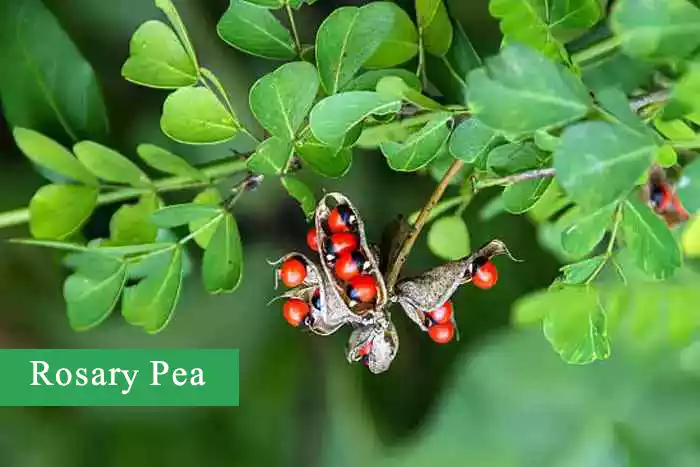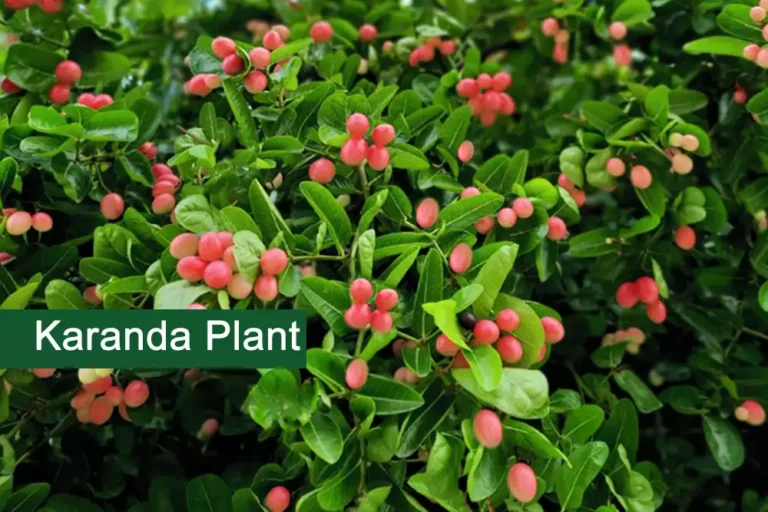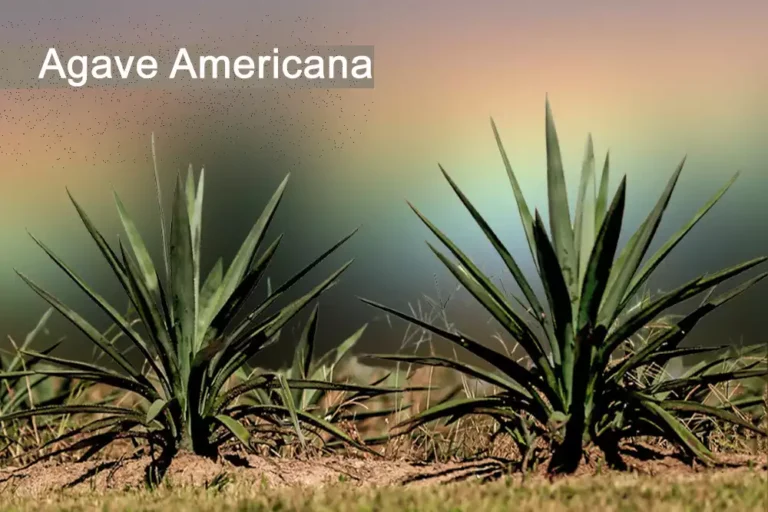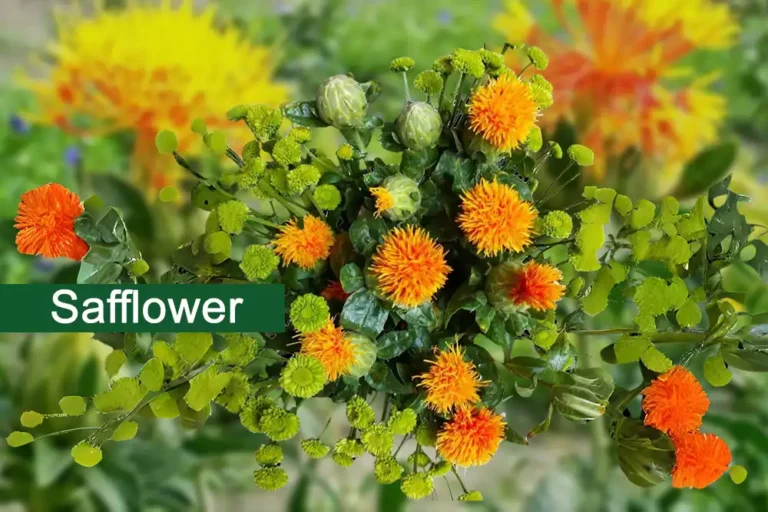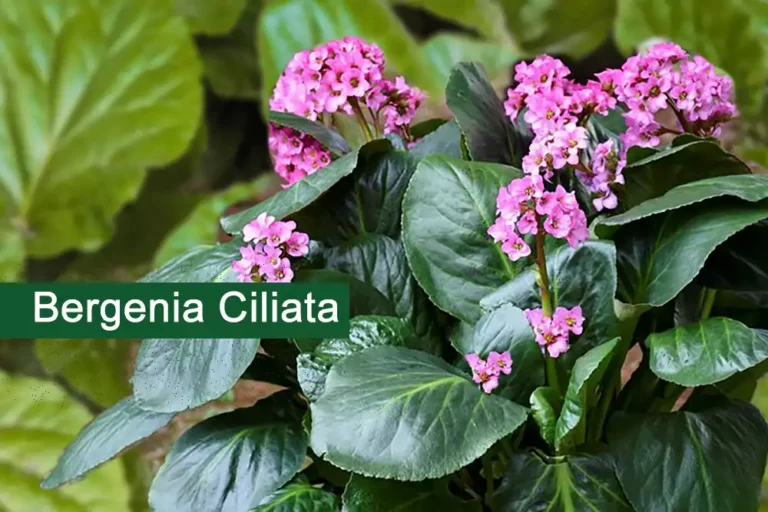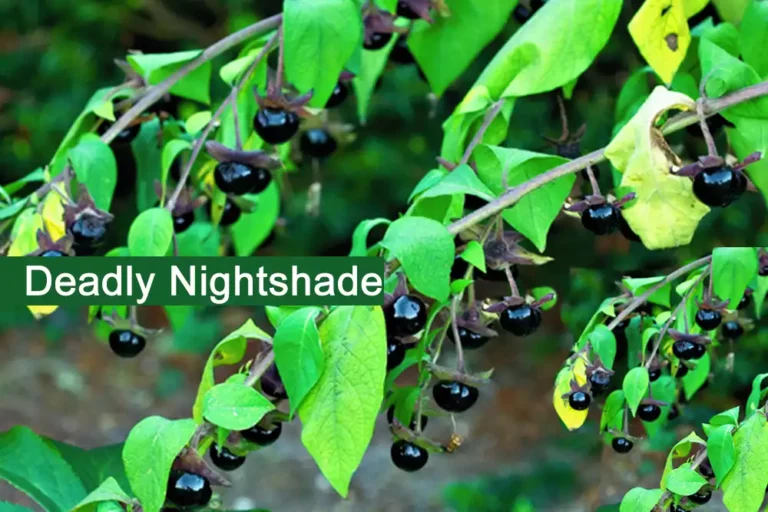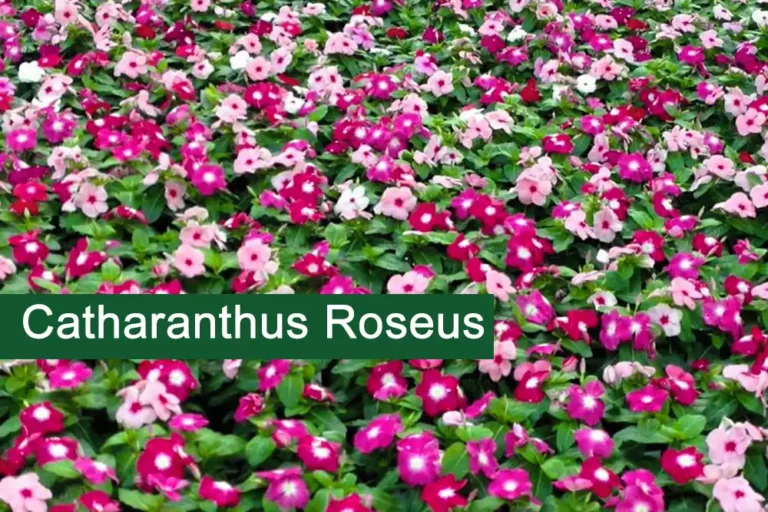Abrus Precatorius Medicinal Uses and Health Benefits (Rosary Pea)
Uncover the Medicinal Plant uses and properties of Abrus precatorius, also known as Rosary pea, crab’s eyes, and ratti plant, including its traditional applications, chemical constituents, and potential health benefits.
Table of Contents
Abrus Precatorius (Rosary Pea Plant) Medicinal Uses and Benefits
The Abrus precatorius plant, scientifically known as Rosary Pea, is renowned for its significant medicinal properties. Commonly called Crab’s Eyes or Ratti Plant, it is used in traditional medicine for treating wounds, skin conditions, and various ailments. The plant contains bioactive compounds such as abrine and anthocyanins, which contribute to its therapeutic effects.
However, it is crucial to handle the plant with care due to its toxic nature. Widely distributed across tropical and subtropical regions, Rosary Pea continues to be studied for its potential health benefits and applications in modern herbal medicine.
Introduction
The Rosary Pea plant, scientifically known as Abrus precatorius, is a fascinating and potent medicinal herb with a storied history. Known by various names such as Crab’s Eyes, Precatory Pea, and Ratti Plant, this perennial shrub is revered for its wide range of health benefits. Though it is toxic in certain forms, when used properly, it holds immense potential in traditional and modern herbal medicine.
Botanical Profile of the Rosary Pea Plant
| Urdu Name | Ratti Plant |
| Botanical Name | Abrus precatorius |
| English Name | Rosary pea, crab’s eyes, Precatory pea |
| Family | Papilionaceae |
| Habit | Perennial shrub |
| Part Used | Leaves, roots and seeds |
| Medicinal Plants | Explore |
The Rosary Pea is a high-climbing vine, often found twining around other plants in tropical and subtropical climates. Its delicate appearance, with slender branches and small, oval leaflets, belies its potent medicinal properties. The plant is easily recognized by its distinctive seeds—shiny, hard, and usually scarlet with a black base—often used in jewellery and traditional counting tools.
Distribution and Habitat
Native to India and Kashmir, the Rosary Pea plant has adapted to various environments around the globe. It thrives at altitudes up to 1200 meters and has been introduced to many warmer regions, including Sri Lanka, Thailand, the Philippines, South China, North America, Tropical Africa, and the West Indies. Its ability to flourish in diverse climates has made it a widely recognized plant in traditional medicine across different cultures.
Medicinal Uses and Traditional Significance
Traditional Folk Medicine
The Rosary Pea plant has a long history of use in traditional medicine. Its leaves, seeds, and roots are valued for their healing properties, particularly in treating wounds and skin conditions. Folk remedies often involve grinding the leaves with lime and applying the paste to acne sores, boils, and abscesses. This application not only reduces inflammation but also speeds up the healing process, thanks to the plant’s anti-suppurative properties.
In rural areas, the plant has been used to treat more severe conditions like tetanus and rabies. For these purposes, the seeds and roots are carefully prepared and administered in controlled doses. The seeds are also known for their contraceptive properties, a fact that highlights the plant’s significance in traditional practices, especially among African tribes.
Tibetan and Ayurvedic Medicine
In Tibetan medicine, the Rosary Pea plant plays a crucial role. The leaves, roots, and seeds are used to address a variety of health issues. A paste made from the roots is traditionally administered to alleviate abdominal pain and treat tumours. When mixed with the rhizome of turmeric (Curcuma longa), this paste is applied to wounds to prevent infection and promote healing.
In Ayurvedic practices, the Rosary Pea plant is equally esteemed. It is used to treat conditions such as leukoderma, a skin disorder that causes loss of pigmentation. Additionally, the plant is believed to have benefits for respiratory health. Ground roots mixed with clarified butter are consumed to soothe coughs and respiratory ailments, while also preventing premature greying of hair—a common concern in Ayurvedic health.
Global Medicinal Applications
Beyond traditional uses, the Rosary Pea plant has gained recognition for its extensive medicinal properties across the world. The seeds, although toxic if mishandled, are known for their wide range of therapeutic effects. They are used as an abortifacient, anodyne, aphrodisiac, antimicrobial, and sedative, among other properties. This versatility has made the plant a valuable resource in treating conditions such as headaches, snake bites, cancer, colds, conjunctivitis, and gastrointestinal issues.
For example, in some cultures, the seeds are ground and used as a remedy for cold and fever, while in others, they are applied as a poultice for rheumatism and arthritis. The plant’s ability to address such a wide array of ailments is a testament to its powerful chemical composition.
Chemical Composition of the Rosary Pea Plant
The Rosary Pea plant is not consumed as food due to its toxic properties, but it contains a complex array of bioactive compounds that are responsible for its medicinal effects. Some of these compounds include:
- Abrine: A toxic protein that can be fatal in large doses but is carefully used in small, controlled amounts for its therapeutic properties.
- Abraline and Abrasine: Compounds that contribute to the plant’s antimicrobial and anti-inflammatory effects.
- Abricin: Another toxic compound that has potential uses in treating certain diseases when properly administered.
- Anthocyanins: Pigments that have antioxidant properties, helping to reduce oxidative stress in the body.
- Gallic Acid and Glycyrrhizin: Both of these are known for their anti-inflammatory and healing properties.
These compounds, among others, make the Rosary Pea plant a powerful yet dangerous medicinal herb. Proper knowledge and careful handling are essential for its safe use in traditional and modern medicine.
Environmental Requirements for Cultivation
The cultivation of the Rosary Pea plant requires specific environmental conditions to thrive:
| Temperature | Max: 44°C Min: 0°C |
| Climate | Tropical or Sub-tropical regions |
| Rainfall | 2071 mm/year |
| Soil | It prefers sandy and clayey soils |
| pH Range | 6.1-7.8 |
| Reproduction | By seeds |
FAQs About The Rosary Pea Plant
-
What are the primary uses of Rosary Pea in traditional medicine?
Rosary Pea is used to treat wounds, skin conditions, and more severe ailments such as tetanus and rabies. In traditional medicine, its leaves, seeds, and roots are applied to various conditions, including acne, boils, and abdominal pain.
-
Are there any health risks associated with Rosary Pea?
Yes, Rosary Pea contains toxic compounds, such as abrine, which can be harmful or fatal if ingested in large amounts. It is crucial to use the plant with caution and under expert guidance.
-
How is Rosary Pea used in modern herbal medicine?
In modern herbal medicine, Rosary Pea is studied for its potential therapeutic effects, including its antimicrobial, anti-inflammatory, and sedative properties. Research continues to explore its safe and effective uses.
-
Can Rosary Pea be grown in my garden?
Rosary Pea can be cultivated in tropical and subtropical regions. It requires well-drained soil, consistent rainfall, and temperatures ranging from 0°C to 44°C. Proper care and knowledge of its toxic nature are essential.
-
What should I know before using Rosary Pea for medicinal purposes?
Before using Rosary Pea, it is important to consult with a healthcare professional or a qualified herbalist. The plant’s toxic properties require careful handling and precise dosage to ensure safety and effectiveness.
Conclusion
The Rosary Pea plant (Abrus precatorius) is a botanical marvel with a rich history of medicinal use. From treating wounds and skin conditions in traditional folk medicine to addressing serious health concerns in Tibetan and Ayurvedic practices, the plant’s versatility is unmatched. However, its toxic nature requires careful handling and knowledge to harness its full potential safely.
In modern herbal medicine, the Rosary Pea plant continues to be studied for its bioactive compounds and their potential applications in treating a variety of ailments. As we continue to explore and understand this potent plant, it remains a testament to the power and complexity of nature’s pharmacy.

